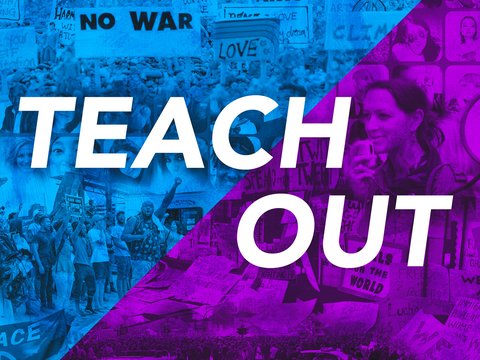Segregation and Diversity
Explore segregated diversity with examples of how segregated communities contribute to different educational experiences for white students and students of Color.
Excerpt From

Transcript
So let's start by talking about segregation and diversity. At a time when American society is becoming increasingly segregated and also diverse, there's need for leaders who can bridge differences, challenge discrimination and create change. For example, Metropolitan Detroit is a highly segregated area, but it also has small areas of diversity within it. The city is largely black and the suburbs are mostly white, although some small areas are increasing in populations of Asian, Middle Eastern and Latin American descent. But the important point here is that we are looking at a society which is both segregated and also diverse at the same time. Here's a picture of Metropolitan Detroit. The area in blue is black, Play video starting at :1:23 and follow transcript1:23 the area in brown or red is white. Play video starting at :1:30 and follow transcript1:30 But within the black area, here illustrated with blue, you can see that there are small areas of other colors within it, overall segregated, in small areas diversity. Here's a map of the United States, a racial map of the United States. And you can see that much of the United States by this map is white, but there are other areas in the United States that are not. And what do you see here, what do you see? Play video starting at :2:17 and follow transcript2:17 I see a society that is segregated. So Metropolitan Detroit is segregated, the State of Michigan is segregated and the United States is largely a segregated society, but again with small areas of diversity. Play video starting at :2:37 and follow transcript2:37 This is the famous Eight Mile, which separates the suburbs from the city of Detroit. So if you can see, the suburban areas are on one side of Eight Mile and then older neighborhoods are on the other side of Eight Mile. You can see a society that is divided almost in half. Play video starting at :3:7 and follow transcript3:07 This is not just about Detroit, but rather I would expect that in your community, wherever it might be, that you, if you look, will see areas that are separated almost as if there were a wall. Segregation results in isolation and inequalities. Some people under segregation have discrimination that faces them, as you can see in these signs. Some young people have rich resources and quality schools, while others attend schools in which toilets are broken and water leaks through the roof. In schools which are increasingly more diverse, often in the inner ring suburbs, the older inner ring suburbs, there are increasing inequalities within the school. So even though a school may be becoming more diverse, it's not unusual to find achievement gaps between one group and another, or incidents of bigotry and bullying, which violate their rights and represent social injustice. So here you see a school in one area within the metropolis and here you see a school in another area, what do you see when you see these two pictures? Segregation is on the rise, and segregation can be correlated with activities and performances in schools. So test scores on standardized tests are rising rapidly in the suburbs, while in the city, there are some areas, as experts recently reported in Detroit, there are some areas where the students might have done better if they had guessed. Play video starting at :5:31 and follow transcript5:31 Well, here's an example of people who are protesting against the desegregation of schools. They do not want black people in their schools. And here is an example of blacks and their allies organizing for social justice. These are the two images that we hope will stay with you throughout this course. There are people who are against social justice in many ways, and then there are other people who are working for social justice. That is the struggle about which this course is about. Now diversity strengthens society and it also intensifies inequalities. When minority students of color enroll in schools that are majority white, for example, inequalities and incidents will increase, and often the teachers are unprepared to handle sensitive situations and administrators are unsure how to proceed. Young people want to communicate with others that are different from themselves, but segregation limits them. This generation of young people has very different attitudes toward communication with others toward diversity than older generations. They want to work together across their differences, but, again, segregation limits them. So this course is about a new form of organizing for social justice, one which recognizes differences and bridges differences through dialogue. If you can see that it's about the new, the modern organizing for social justice will be about the recognition of differences and then the bridging of differences through dialogue. All of these are parts of the social justice process. Young people have always played roles in organizing for social justice, and the new combination of segregation and diversity offers new opportunities. Young people are strategically situated, and thus they're are very good group for understanding this approach to social justice, which is our purpose here. Can you see segregation, and if so, what does it look like? Can you see segregation in your school, in your classes, in your hallways or in the cafeteria? Does segregation have an effect on us, and if so, how? And what does diversity mean to you? When you hear the word diversity what comes to mind? Why should we or anyone care about diversity? For example, does diversity make our education better, and if so, why?